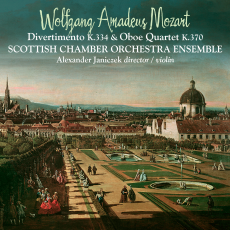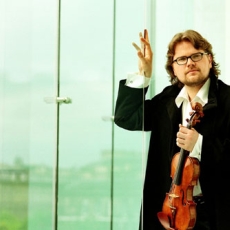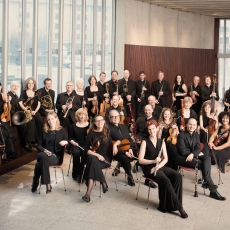Scottish Chamber Orchestra - Mozart: Divertimento K.334 & Oboe Quartet K.370 - Audio Video Club of Atlanta
As performed with panache and style by the select Scottish Chamber Orchestra Ensemble under violinist and director Alexander Janiczek, these two works for small groups by Mozart have a lot to recommend themselves to the listener. The playing of the horns and the solo violin in the Divertimento in D major, K. 334 are particularly distinguished in a performance characterized by beautiful ensemble work. The same is true of the solo reed in the Oboe Quartet in F major, K. 370, as it shines forth like an operatic diva in the best sense of the word.
The Divertimento, scored like its predecessors K. 205, K. 247 and K. 287 for two violins, viola, double bass, and two natural horns, has in common with them a seemingly endless number of fetching, well-supported melodies. But here, something else has been added in the way of an 'Andante' and 'Variations' in the minor key, not something one ordinarily expected of music that was customarily written for festive occasions. In this instance, it was to celebrate the completion in 1780 of the university studies in jurisprudence of Sigismund Robinig, son of a prominent Salzburg family to whom the Mozart family had been close friends. Young Mozart always displayed a nice sensibility where the feelings of other people were concerned. So it seems plausible that the darkly expressive writing for the horns in the lower notes of their harmonic range might well have given the Robinigs a moment for reflection on Georg Joseph Robinig (1710-1760), the husband and father they had lost twenty years earlier, and Sigismund himself on the gravity of the profession he was entering.
Elsewhere, the festiveness of the occasion is more pronounced, as Mozart gives us an expansive six-movement structure with room of a rich variety of expressive material which he connects in ingenious ways. That includes two Minuets. The first is elegant and flowing. The second is high-spirited with two contrasted Trios. The opening 'Allegro' movement and the finale, an 'Allegro' in Rondo form with an abundance of contrasting motifs, both give maximum scope to the role of the principal violin, which often comes across as yet another example of Mozart's 'concertos in disguise'.
Without disparaging the writing for the violin, viola, and cello, which is particularly distinguished in the canonic passages and harmonic descents, the oboe is clearly the center of attention in K. 370. Mozart wrote this work for the oboist Friedrich Ramm, whose bravura playing, remarkable in its day for its purity and agility in the higher range, is replicated here by the SCO's Robin Williams, who adds his own gracious warmth to the sonic picture. The expressive freedom and gaiety of the outer movements are contrasted by a soulful 'Adagio' as the central movement. The oboe writing recalls the arias and cavatinas of such irrepressible Mozart heroines as Susannah and Zerlina. And it's all captured in very attractive multichannel sound of unusual clarity.


